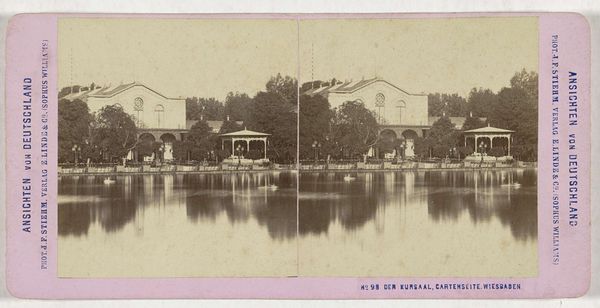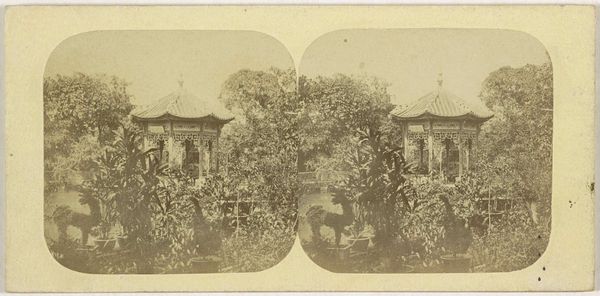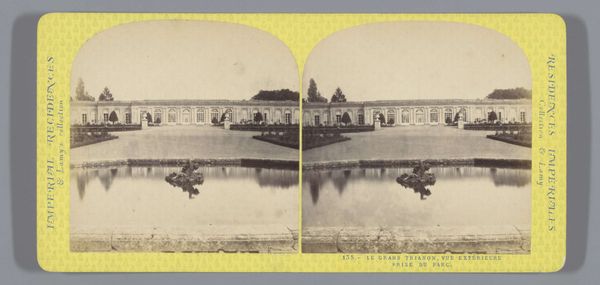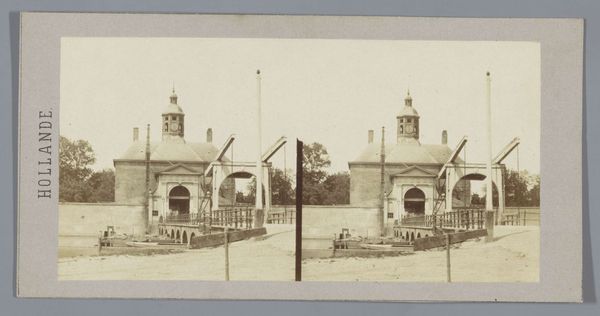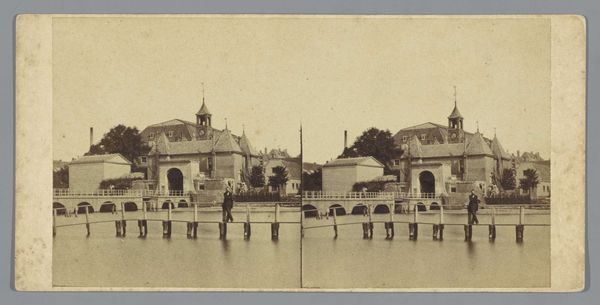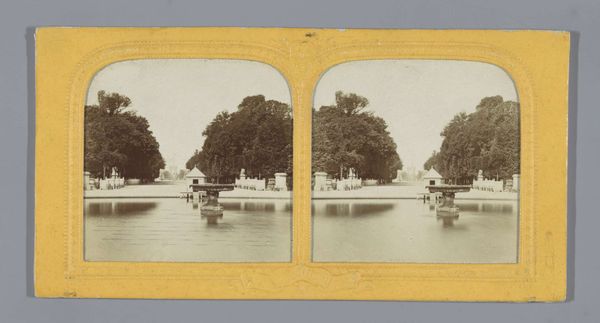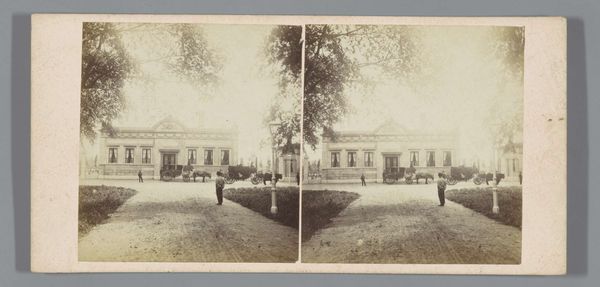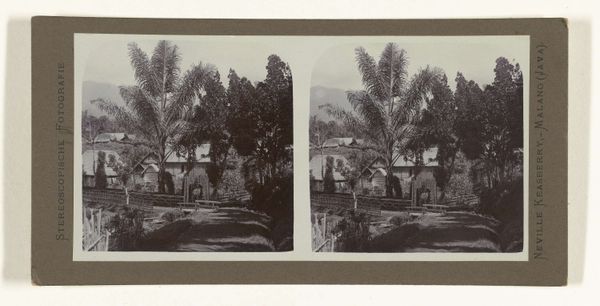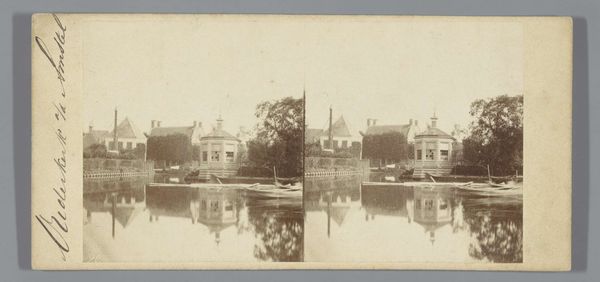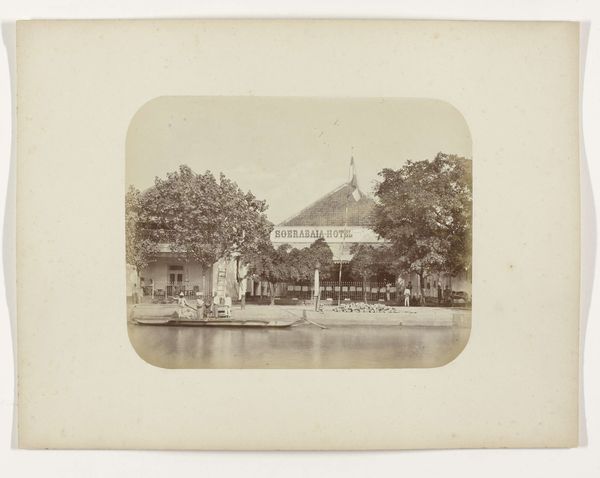
daguerreotype, photography
#
daguerreotype
#
photography
#
cityscape
#
realism
#
building
Dimensions: height 86 mm, width 176 mm
Copyright: Rijks Museum: Open Domain
This stereoscopic albumen print captures the Kurhaus in Wiesbaden, Germany, and was created by Hippolyte Jouvin in the mid-19th century. The symmetry of the Kurhaus structure and its reflection in the water immediately draws the eye, creating a balanced composition. The subdued tones enhance the serene atmosphere, inviting contemplation of the architectural form. The use of stereoscopy, presenting two nearly identical images side by side, offers a three-dimensional effect that was novel for its time. This technique plays with depth and perception, inviting viewers to question the nature of representation itself. Consider how this manipulated depth relates to the semiotic understanding of space. Does it challenge fixed meanings, or engage with new ways of thinking about perception and representation? The formal qualities of symmetry, tonality, and depth function not just aesthetically but also as part of a larger cultural and philosophical discourse. This highlights the complex interplay between visual form and conceptual meaning, underscoring that art is a site of ongoing interpretation.
Comments
No comments
Be the first to comment and join the conversation on the ultimate creative platform.

